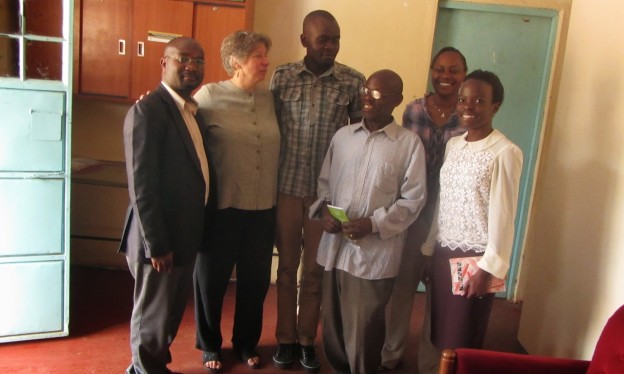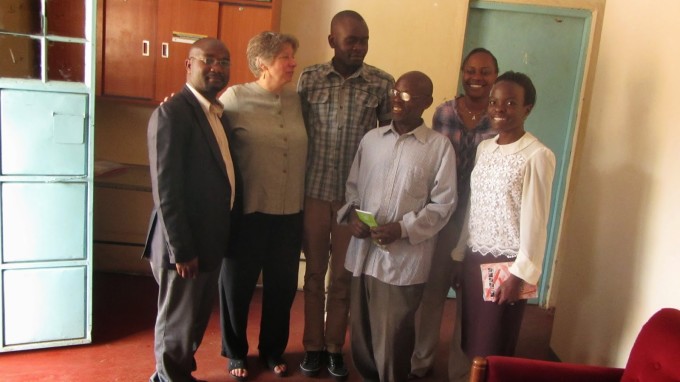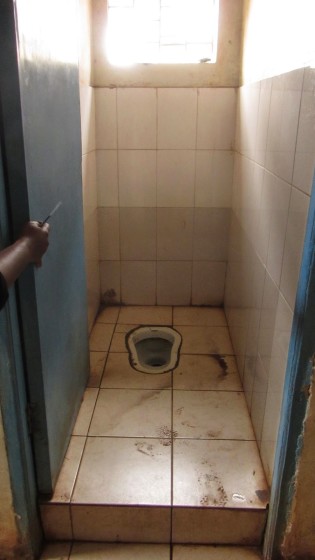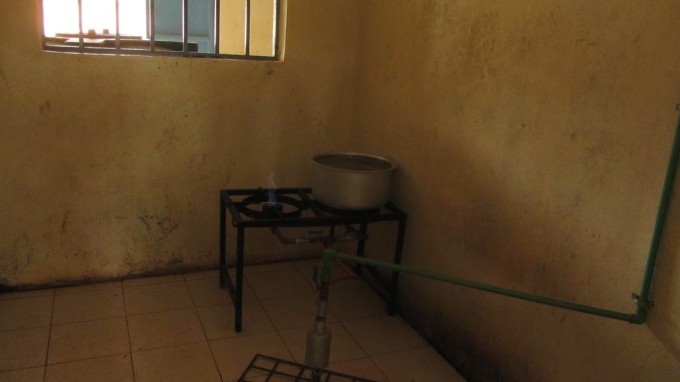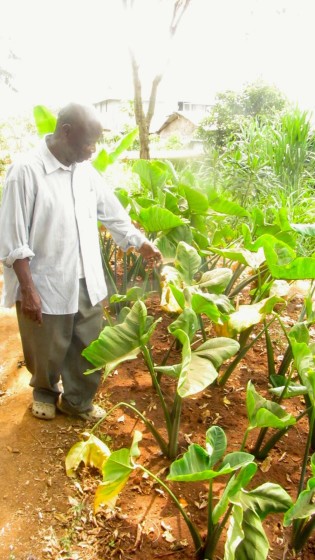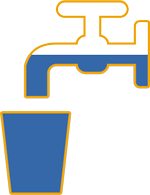Next I went to visit the Umande Trust in Kibera. Kibera is one of the oldest informal settlement areas (they do refer to these areas as slums) where sanitation is one of many significant issues. At this site, they have built a toilet block and created biogas to use to heat water for showers and to cook.
When in India, I was studying these biogas systems that were just beginning to be built in orphanages. The idea has apparently taken off and been exported to many places, including Nairobi. Before sharing my Rich Earth Institute power point, I was given a tour.
This toilet is not urine diverting but a single, porcelain hole. Everything goes down the hole to a biodigester where it is contained and the waste creates gas.
There were 4 of these toilets on each the men’s and ladies’ sides of the ablution block. (That is what facilities are called which are used by many people and have multiple toilets.) The biogas is available for cooking and heating water so this facility is also used for bathing. It costs 5 shillings to use the toilet and 10 shillings to bathe with the hot water.
More men use this for bathing because they do so on their way to or from work. The women prefer to bathe in their homes for more privacy. About 300-400 people use this facility daily.
They are also going to be experimenting with using the slurry from the biodigester to create a compost product, mixing it with food scraps.
This is Andrew who has, along with others, been farming a fairly large plot in Kibere for more than ten years. This is cassava. They also grow kale, spinach, collards, tomato, cilantro, pumpkins and more. Each Monday they harvest and have a market. On other days, other parts of the settlement have markets. We discussed fertilizer and he showed me a plant which they grow on the edges of the plot. They cut down its leaves and soak them in water. Then they use this liquid as a fertilizer.
I took many more pictures today but when back at Eric’s I realized that my camera settings had been changed and the photos are mostly washed out. Live and learn.
There are black clouds in the sky and thunder – Ooooo
RAIN IS COMING
Mvua inakuja
Tomorrow is my last day in the city doing these kinds of meetings. And then I get to go to the country side. Blog posts will be less frequent – I have no idea what to expect for internet connectivity.
